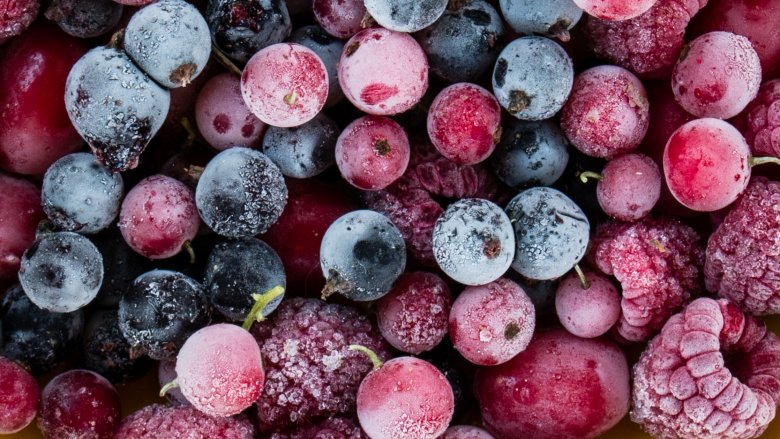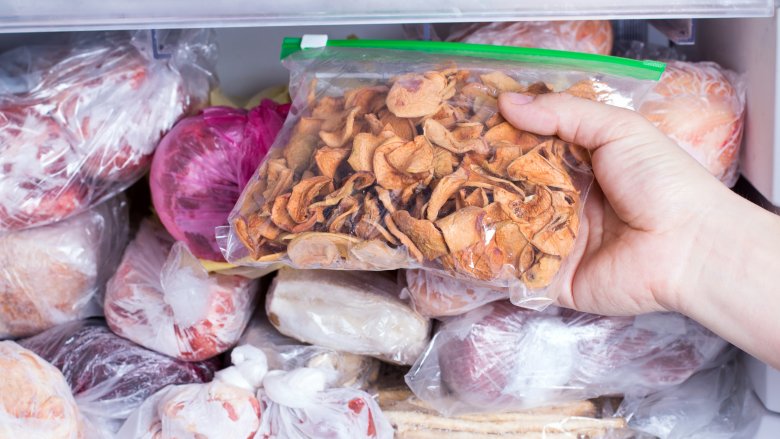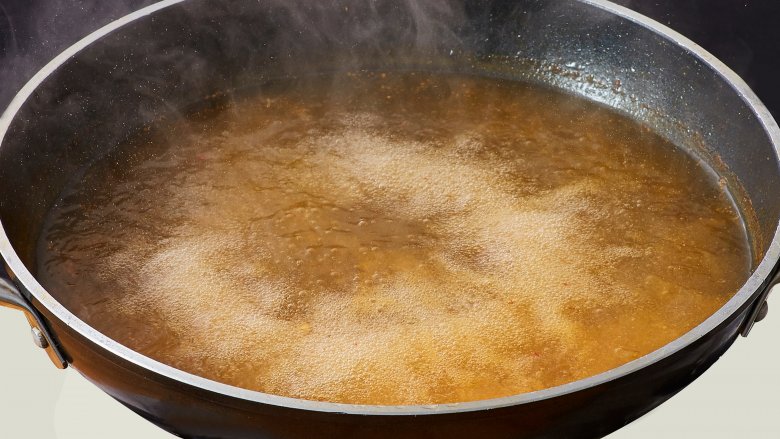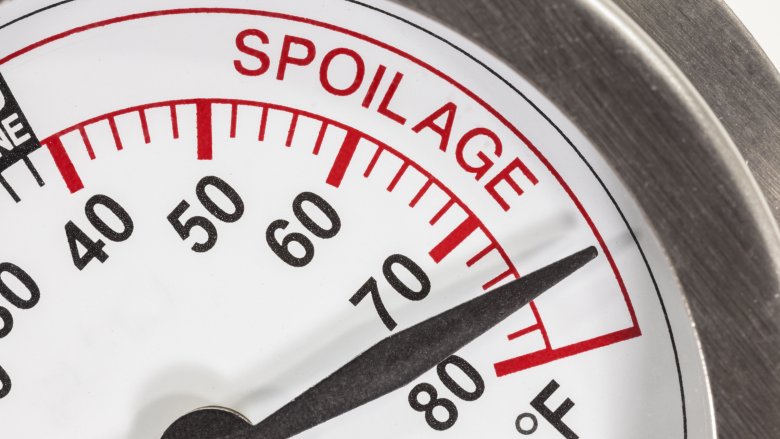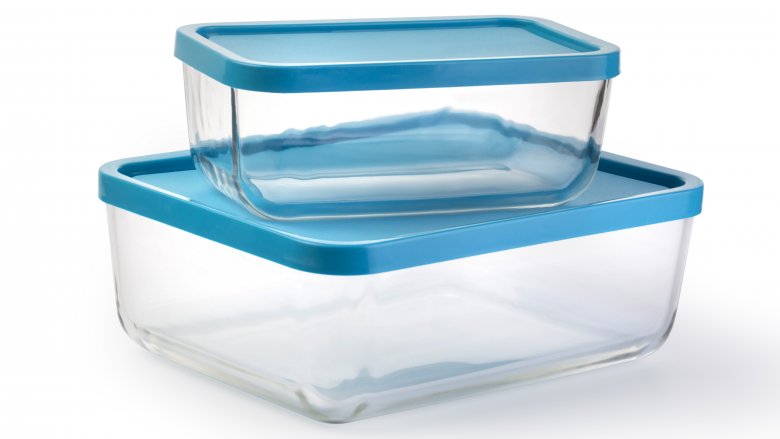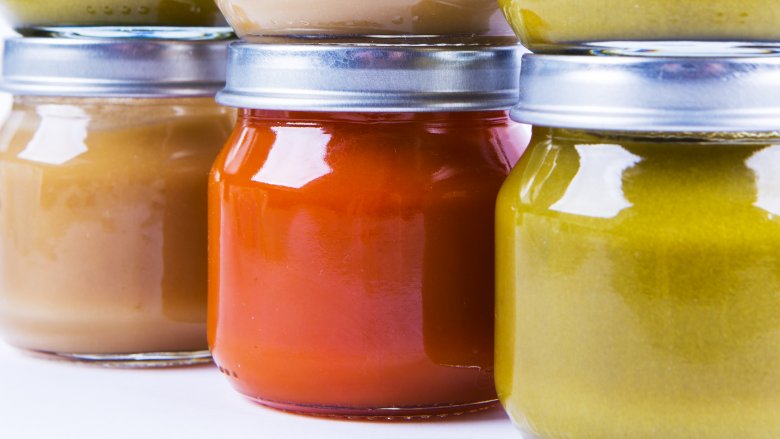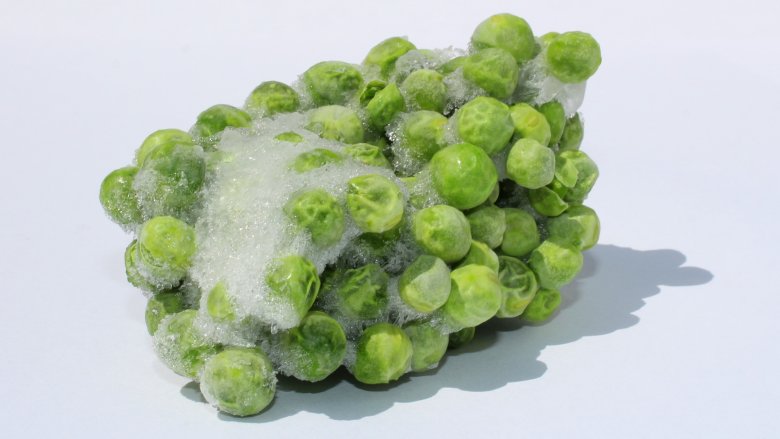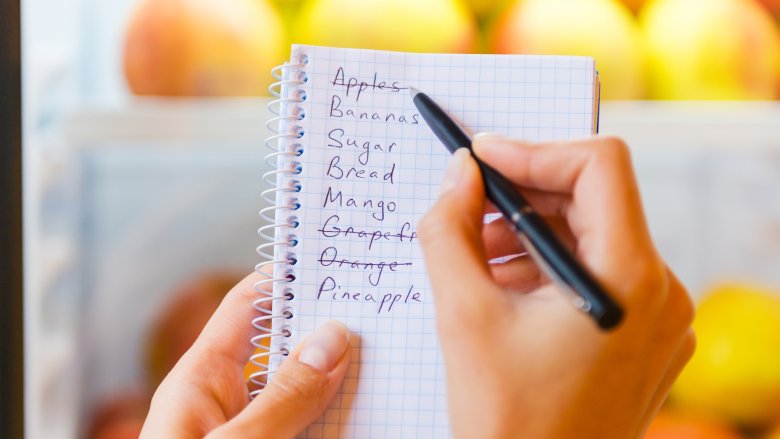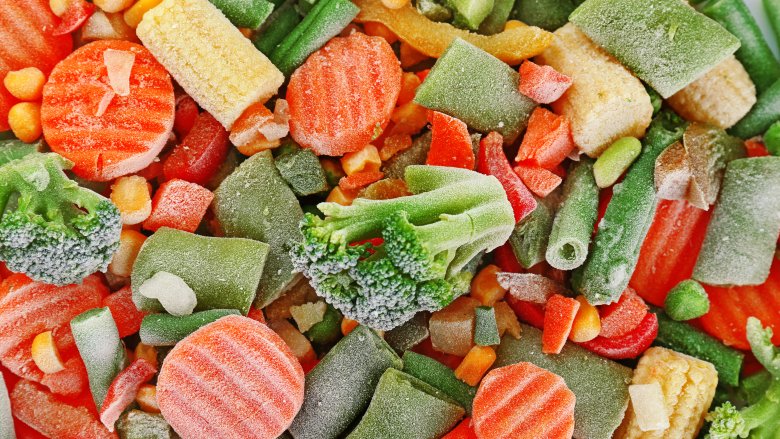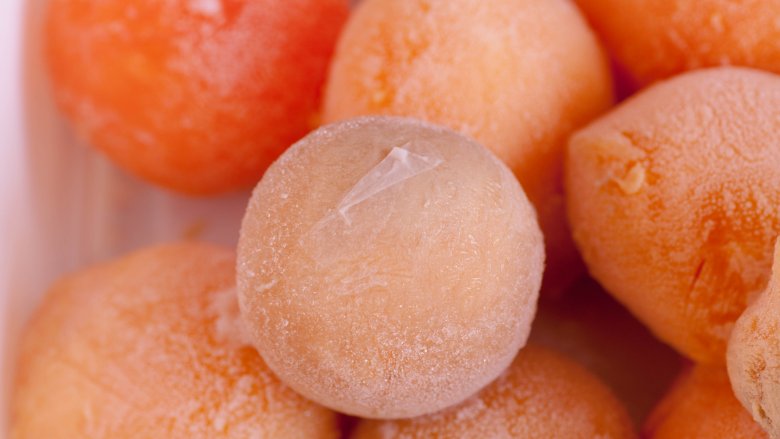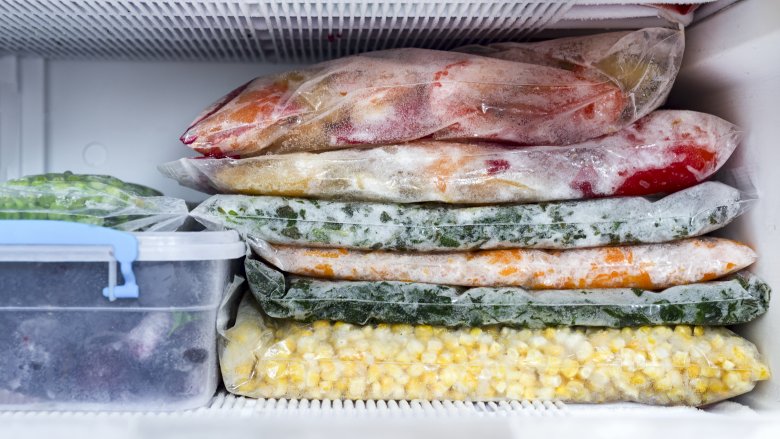You've Been Using Your Freezer Wrong This Whole Time
Freezers are magical. They allow us to expand the shelf life of food, keep our ice cream from melting, stash our big batches of soup, and make weeknight dinners a cinch. If you have a large freezer you probably take full advantage of these benefits and then some. Perhaps you love your freezer so much you have two. While the freezer does help make life easier, there's a good chance you're not freezing your food properly. Freezing food may sound like a simple concept, but there are some common mistakes that often get overlooked. For instance, can you locate everything in your freezer right now? Do you know the right temperature? Do you even know what's in there? You may love your freezer, but unless you freeze food properly it won't be able to do its job successfully. If you want to eliminate waste and make the most of your frozen goods, here are the common mistakes you should be aware of.
You're packing your freezer all wrong
Is your freezer crammed full of food? This is one of the most common mistakes people make when it comes to the freezer. It's tempting to pack it all in there, but a freezer should be kept nice and tidy like a spice rack. An orderly freezer allows for air to circulate throughout the unit and makes life easier when it comes to finding specific items. Unless you like to pack and repack your freezer every time you need to poke your nose around in it, don't stuff it to the brim full of food. Also, keep the items you're more likely to use in the front so they're more readily accessible.
While cramming in too much is a problem, you also don't want to pack too little. Each time you open the freezer, warm air enters. Although this is inevitable, the freezer spends a lot of energy trying to cool down that warm air. Keeping enough frozen items help cool down the air, allows the freezer to save some energy. If you find your freezer a little too empty, ziploc bags or plastic jugs full of water can help. Having these items on hand will also come in handy next time you need ice for your cooler.
You're not doing this before freezing
Imagine you just finished making a big pot of soup that you' are going to store for future dinners. You have divided it out among containers and are ready to pack it in the freezer. Before you do that, there is one very important step you need to take and that's cooling down the food. The reason for this is if you put hot food in the freezer it can cause other food items to partially thaw which will affect the quality of the food. To cool soup down quickly, place it in an ice bath. For other foods, separate them into smaller shallow containers and place those into the refrigerator until they have cooled down.
Keep in mind, whether you're freezing food you just prepared or items you picked up at the grocery store, you want to get your perishables cooled within two hours. Any longer and the food has the potential to grow bacteria that may get you sick.
You're not storing food at this temperature in your freezer
This step may sound like a no-brainer, but you need to check the temperature of your freezer. According to the USDA, a freezer should be kept at 0 degrees Fahrenheit for long-term storage. If a freezer can't be kept at this temperature or the door is opened often, they recommend only using it for short storage. The reason it's important to maintain proper temperature is because failure to do so will cause food to spoil. If you find that your kitchen freezer is opened as frequently as the fridge itself, it may be a good idea to get a second freezer. The second freezer can act as long storage, whereas your refrigerator freezer can keep items you'll use up more quickly.
To avoid a warm freezer, check it periodically with a thermometer. While you may think it's cold enough because it feels cold, the only way to know it's at the proper temperature is by checking. If you're going on vacation and are worried about the freezer, place a few ice cubes in a cup and store them snugly inside. If the ice has melted (and possibly become frozen again) upon your return, there was either a power outage or your freezer is not keeping temperature.
That's the wrong container for the freezer
There's a reason different containers exist — they all serve a specific purpose. Before you store your food in whatever container you grab, make sure it's freezer-friendly. Flimsy wraps and containers not designed for the freezer like thin sandwich bags won't stand a chance against freezer burn. You need to use containers that can lock in the moisture of the food, helping to preserve it.
When choosing a container, there are many options to consider. Strong plastic wrap is ideal for solid foods like cuts of meat, bread, and things of that sort. Plastic containers work well for short-term storage, as wells as plastic zipper bags. Zipper bags are great for everything from prepped smoothie mixes to soups. If you need longer storage, glass jars or containers work well. However, when using glass, the food needs to be packed in properly to preventing cracking. To do this, leave some headroom in the container and cool it before freezing.
You're forgetting to do this one thing to your jars for the freezer
You may know what you're putting into the freezer, but do you know what you're pulling out of it? One of the simplest ways to keep the freezer organized is to label food. Without a label, food can easily be mistaken for something else — which can become problematic if you're making something like spaghetti and mistook the spicy salsa for the sauce. When it comes down to the basics of labeling, the first step is to label everything. Take a permanent marker and write directly on the container itself or adhere a piece of tape to it. As for what to write, include what the item is, the date, and reheating instructions if necessary. This will avoid any sort of confusion as to what it is or how you should reheat the food. Next time you reach into the freezer to heat up your leftovers, you won't have to worry about what it is or remembering how long it's even been in there.
You're freezing a massive clump
While you may be in a hurry to wrap your food up and stash it in the fridge, it's not a good idea to freeze it in clumps. Food frozen in clumps means you're defrosting clumps. Unless you're going to eat everything at once, food needs to be broken down into portions. According Bon Appetit, meat should be wrapped into individual portions so it doesn't all stick together. As for fruit and veggies, they recommend freezing it first on a baking sheet in a single layer then transferring to an airtight bag. This trick will prevent everything from freezing together.
Another nifty trick is to use ice cube trays to freeze liquid. Broths, beverages, tomato paste, and spreads like pesto can all be frozen this way then transferred to a freezer bag. By doing so, the next time you need to use this item you're not stuck defrosting more than you need.
You're failing to do this one organizational step for your freezer
One of the worst things you can do is forget what's in the freezer. The whole point of freezing food is to eat it in the future. Forget what's in there and the food will most likely be frozen past its prime and wind up getting tossed out. This not only creates food waste, but it wastes energy trying to keep it cool.
To prevent wasting food and money, keep an inventory of items in the freezer. Write down what items you have in there and the date the item was frozen. This is not only beneficial for keeping track, but it will also help you when it's time to clean out the freezer (if you've forgotten to add that all-important date to a package). As for the inventory list itself, the old-school method of a pen and paper will get the job done. Place it on the refrigerator with a magnet so it's right there in front of you for easy reference. If you're more of a tech person, make a note on your phone, create a spreadsheet on your computer, or use an app.
You're ignoring the shelf life of frozen foods
While it's important to label food with a date, it's also important to know when that date has reached its expiration. Just like fresh food, everything you put into the freezer will keep for different lengths of time. If you have bags of frozen vegetables stashed in your freezer, they'll be good for about a year — except for green beans which should be eaten within eight months. Butter will also last for a year, but milk should be consumed within three months. Fruit is another food that can last a year, unless the package is open, which means it should be eaten within eight months at the latest.
Frozen meat can be a bit tricky. Bacon, sausage, ham, and hot dogs can last about 1-2 months. Uncooked roasts or steaks on the other hand, can last anywhere from 4-12 months. Uncooked wild game is best within 8-12 months. For poultry, if it's cooked eat it within four months or 12 months for uncooked. All other cooked meats, eat within 2-3 months.
Fish is a little bit different. Lean fish can last up to six months, but anything fatty or in the shellfish category has a freezer lifespan of only a couple months. As for all those leftovers, it's best to eat them within three months. Aren't you happy now you have an inventory list with dates?
You're freezing things you shouldn't
So now that you know how to freeze food and how long to freeze it, let's discuss what foods you shouldn't freeze. It's probably hard to believe, but there are some things that simply should not go in there. For starters, it's not a good idea to freeze cream-based food like sour cream or yogurt because it will separate the liquid and fat, which will give it a weird texture. Some cheeses will also get a weird texture if frozen. Freezing greens causes them to wilt and lose flavor, which is not ideal for a salad. As for spuds, it's best to keep them out of the freezer unless you like them mushy. Same thing goes for fresh fruits and veggies with a high water content. Once they're thawed, they take on a soggy texture.
While freezing may change the quality of these items, the two things you simply can't freeze are raw eggs and canned food. When raw eggs are placed in the freezer, the liquid expands, hardens, and cracks the shell. Canned food can swell when frozen, making it very difficult to tell if it's still good or not — and it doesn't need the freezer anyway.
You're hitting the refreeze limit
When it comes to refreezing frozen food, there is often some confusion. Is it safe to refreeze and reheat food that was previously frozen? According to USDA guidelines, it is safe to refreeze food that was thawed out properly in the refrigerator, but that doesn't mean you should. Refreezing food will result in quality loss.
According to Bon Appetit, however, food experts believe that once something has been frozen it should never be refrozen. When food is thawed and heated it introduces more bacteria into the food, which won't be killed just because it gets refrozen. Refrozen food also becomes incredibly mushy because the water content has expanded. While refreezing food may not be the most appetizing, there is one circumstance in which you really can't refreeze food and that has to do with how you handle it. If a food item was not thawed out properly or not cooked fully, then it should never be refrozen.
